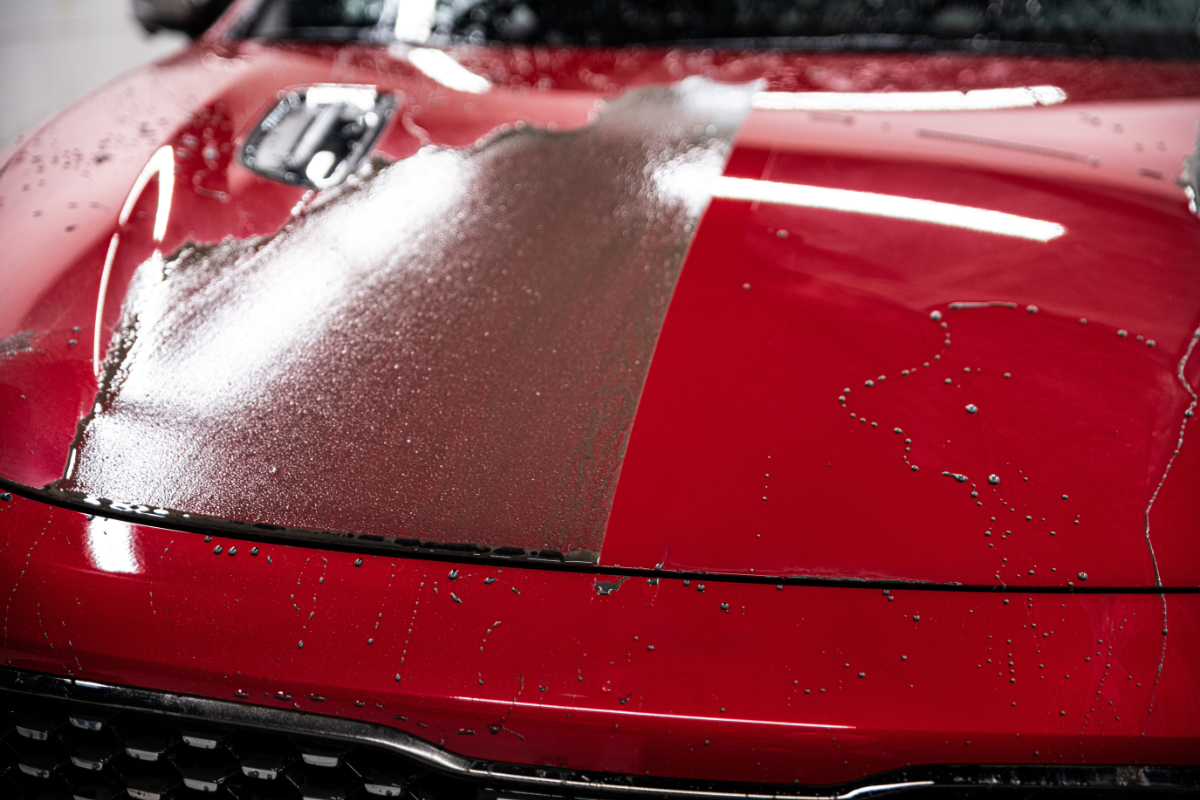Top Advantages of Choosing Ceramic Coating Philadelphia for Long-Lasting Durability
Top Advantages of Choosing Ceramic Coating Philadelphia for Long-Lasting Durability
Blog Article
Why Ceramic Finish Is the Ultimate Option for a Remarkable End Up
Ceramic finishing has emerged as a leading service for those looking for a remarkable coating for their lorries, many thanks to its remarkable toughness and protective functions. What elements really established ceramic coating apart?
What Is Ceramic Finishing?

When applied properly, ceramic covering produces a hydrophobic surface area that fends off water and dust, making it simpler to keep and clean. Unlike traditional waxes or sealants, which generally use short-lived security, ceramic finishings can last for several years, relying on the product quality and application method. The process of using ceramic finishing calls for thorough prep work, including extensive cleansing and often paint modification, to ensure optimum bonding and effectiveness.
Ceramic finishes are not limited to vehicle surfaces; they can likewise be made use of on different materials, including glass, metal, and plastics, providing a flexible option for enhancing security. Overall, ceramic coating stands for a considerable innovation in surface defense modern technology, combining both visual and useful benefits for a variety of applications.
Advantages of Ceramic Covering
While numerous surface security options exist, the benefits of ceramic coating attract attention because of its unique buildings and lasting performance. One of the primary benefits is its extraordinary resilience. Ceramic Coating Philadelphia. Unlike conventional wax or sealants that call for frequent reapplication, ceramic finishings offer a resistant layer that can last for a number of years, dramatically reducing maintenance initiatives
One more notable advantage is enhanced defense against ecological contaminants. Ceramic coverings develop a hydrophobic surface that repels water, dirt, and different pollutants, making it less complicated to cleanse. This feature not only maintains the lorry's appearance but also minimizes the danger of rust and oxidation, especially in rough climate conditions.
Furthermore, ceramic coatings use superior resistance to UV rays, stopping fading and degradation of paint in time. This UV protection is important for preserving the aesthetic worth of surfaces and cars revealed to route sunshine.
Additionally, the shiny surface attained with ceramic layer improves the total aesthetic charm, providing surfaces a showroom-quality shine. In general, ceramic layers stand for a considerable advancement in surface defense innovation, offering enduring benefits that accommodate both aesthetic and practical needs.
How It Functions
Understanding the science behind ceramic finishes exposes how they give such exceptional protection and durability. At its core, a ceramic finishing is a fluid polymer that chemically bonds with the automobile's factory paint. This bonding creates a protective layer that is both hydrophobic and oleophobic, repelling water, dust, and oil. The main component of most ceramic coatings is silicon dioxide (SiO2), which is originated from quartz. This substance contributes to the covering's hardness and resistance to scrapes, UV rays, and environmental impurities.
The application process entails numerous steps, consisting of surface area preparation, which is vital to attaining optimal adhesion. As soon as used, the finish goes through a healing procedure, throughout which it solidifies and forms a semi-permanent bond with the paint surface area. This bond is what differentiates ceramic layers from standard waxes and sealants, giving a longer-lasting protective barrier that can withstand for several years.
In addition, the density of the coating can improve its safety high qualities, ensuring that it can stand up to rough conditions. Ultimately, the science of ceramic finishings combines advanced materials with cutting-edge application techniques to deliver an unrivaled level of security and visual enhancement for lorries.
Comparison With Conventional Techniques
When contrasted to typical paint defense approaches such as sealants and waxes,The advantages of ceramic coatings become particularly apparent. While waxes provide a temporary shine, usually lasting a few weeks to a number of months, ceramic finishings give a durable safety layer that can sustain for numerous years. This try this site sturdiness substantially reduces the regularity of reapplication, making ceramic layers an extra cost-efficient option in time.
In addition, standard approaches commonly need extensive prep work and multiple applications to attain a sufficient degree of defense. On the other hand, ceramic layers bond at a molecular level with the lorry's surface, creating a durable shield against ecological pollutants like UV rays, acid rainfall, and roadway salts. This bond boosts the automobile's resistance to scratches and swirl marks, which prevail with standard waxes and sealants.
In addition, the hydrophobic residential properties of ceramic finishes repel water and dirt, causing simpler cleaning and upkeep. On the other hand, wax and sealant-treated surfaces can draw in grime, necessitating even more regular cleaning - Ceramic Coating Philadelphia. Generally, ceramic finishes not best site only give remarkable defense however also provide an extra enduring and aesthetically appealing finish, establishing them as the favored selection for discerning lorry owners
Application and Maintenance Tips

Utilizing a foam applicator, apply the finishing in small areas, adhering to the producer's guidelines concerning density and overlap. Allow enough healing time in between layers, typically 24-hour, to make certain appropriate bonding. After application, it is essential to prevent exposure to water or extreme aspects for at least a week to permit the covering to completely cure.
For upkeep, clean the lorry on a regular basis with pH-balanced soaps click to read and avoid unpleasant materials. Touchless car cleans are advised to decrease scratching. Furthermore, using a ceramic upkeep spray can improve the covering's hydrophobic properties and durability. Regular assessments for any kind of signs of wear will certainly help preserve the layer's stability and preserve that excellent finish.
Final Thought
In conclusion, ceramic covering emerges as an exceptional choice for achieving a flawless auto finish. By creating a durable bond with manufacturing facility paint, ceramic covering successfully guards versus scrapes, UV rays, and ecological contaminants.

Report this page